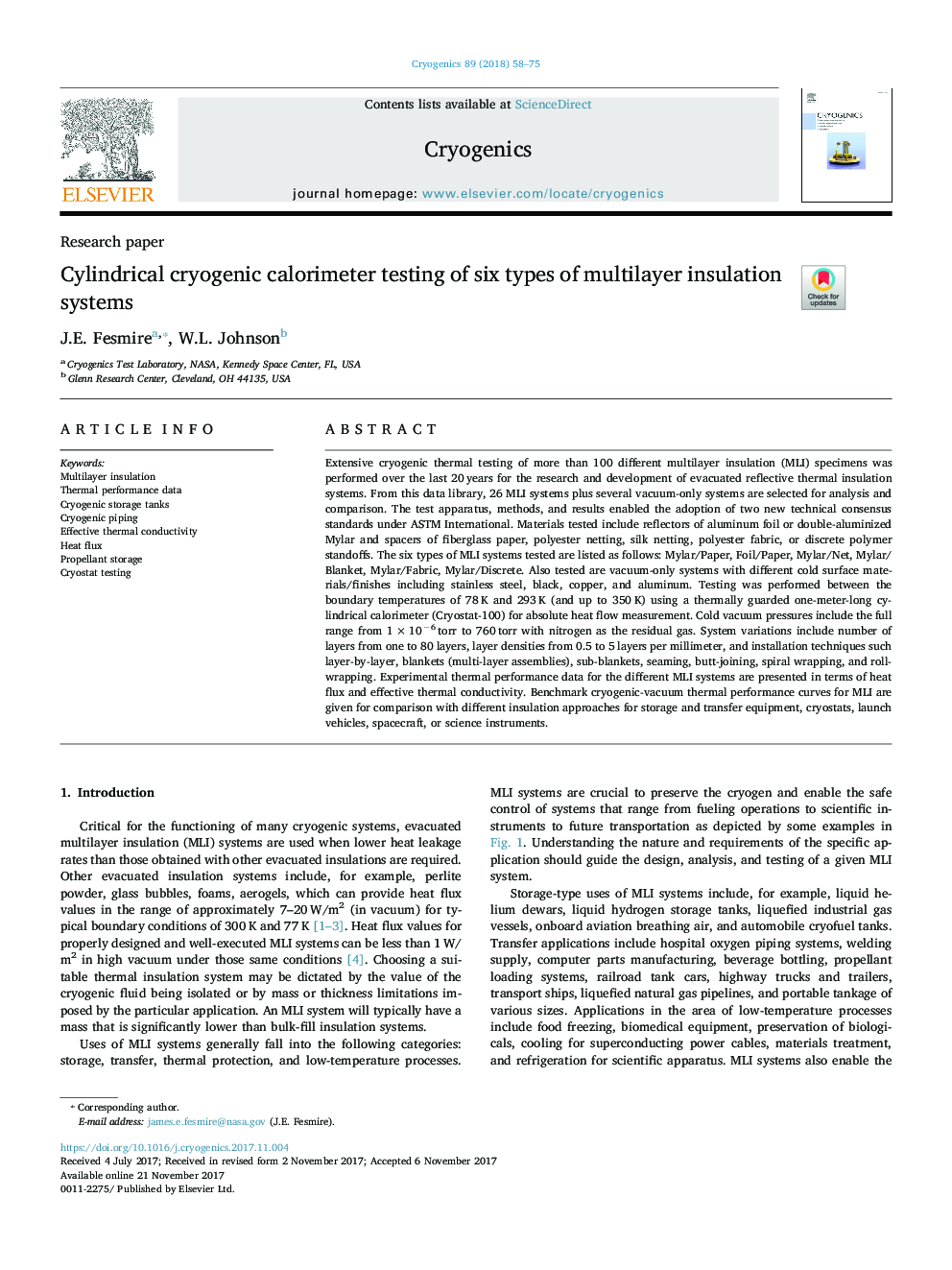| Article ID | Journal | Published Year | Pages | File Type |
|---|---|---|---|---|
| 7915722 | Cryogenics | 2018 | 18 Pages |
Abstract
Extensive cryogenic thermal testing of more than 100 different multilayer insulation (MLI) specimens was performed over the last 20â¯years for the research and development of evacuated reflective thermal insulation systems. From this data library, 26 MLI systems plus several vacuum-only systems are selected for analysis and comparison. The test apparatus, methods, and results enabled the adoption of two new technical consensus standards under ASTM International. Materials tested include reflectors of aluminum foil or double-aluminized Mylar and spacers of fiberglass paper, polyester netting, silk netting, polyester fabric, or discrete polymer standoffs. The six types of MLI systems tested are listed as follows: Mylar/Paper, Foil/Paper, Mylar/Net, Mylar/Blanket, Mylar/Fabric, Mylar/Discrete. Also tested are vacuum-only systems with different cold surface materials/finishes including stainless steel, black, copper, and aluminum. Testing was performed between the boundary temperatures of 78â¯K and 293â¯K (and up to 350â¯K) using a thermally guarded one-meter-long cylindrical calorimeter (Cryostat-100) for absolute heat flow measurement. Cold vacuum pressures include the full range from 1â¯Ãâ¯10â6â¯torr to 760â¯torr with nitrogen as the residual gas. System variations include number of layers from one to 80 layers, layer densities from 0.5 to 5â¯layers per millimeter, and installation techniques such layer-by-layer, blankets (multi-layer assemblies), sub-blankets, seaming, butt-joining, spiral wrapping, and roll-wrapping. Experimental thermal performance data for the different MLI systems are presented in terms of heat flux and effective thermal conductivity. Benchmark cryogenic-vacuum thermal performance curves for MLI are given for comparison with different insulation approaches for storage and transfer equipment, cryostats, launch vehicles, spacecraft, or science instruments.
Related Topics
Physical Sciences and Engineering
Materials Science
Electronic, Optical and Magnetic Materials
Authors
J.E. Fesmire, W.L. Johnson,
